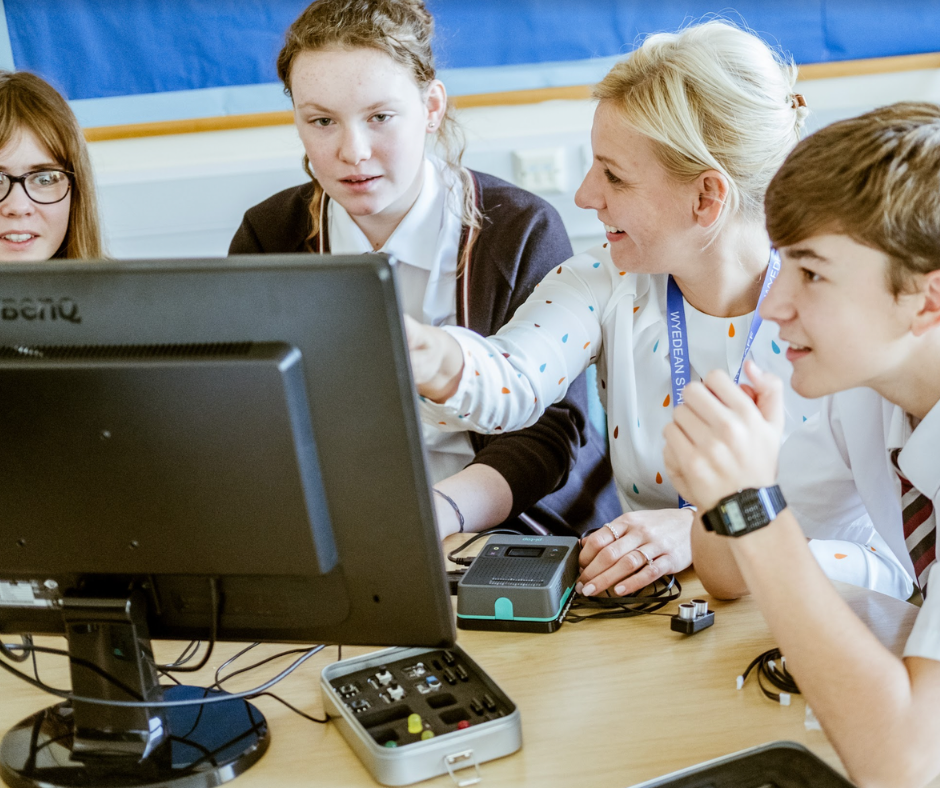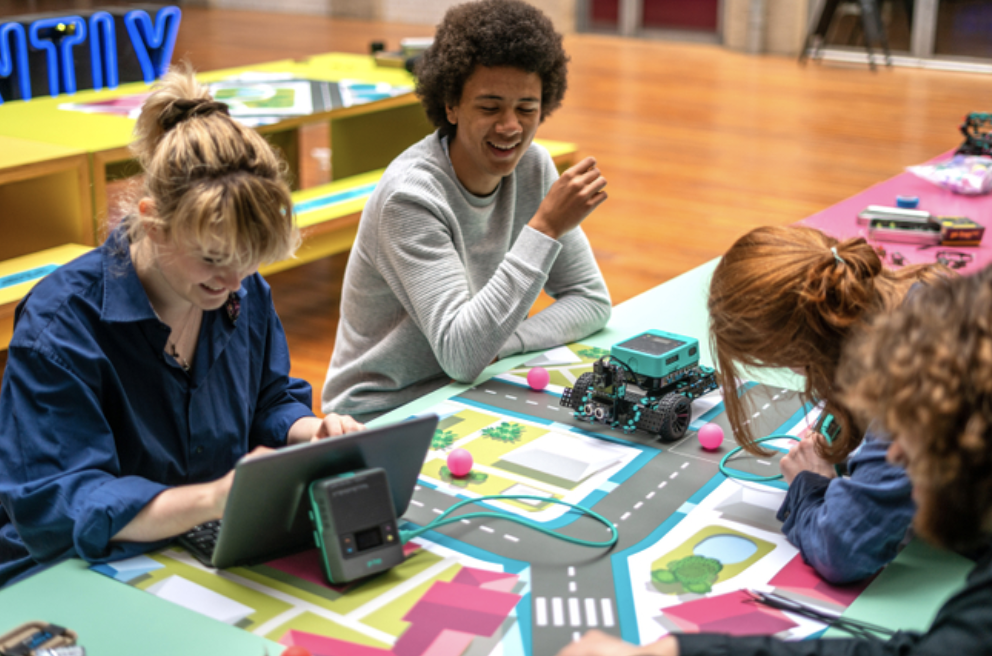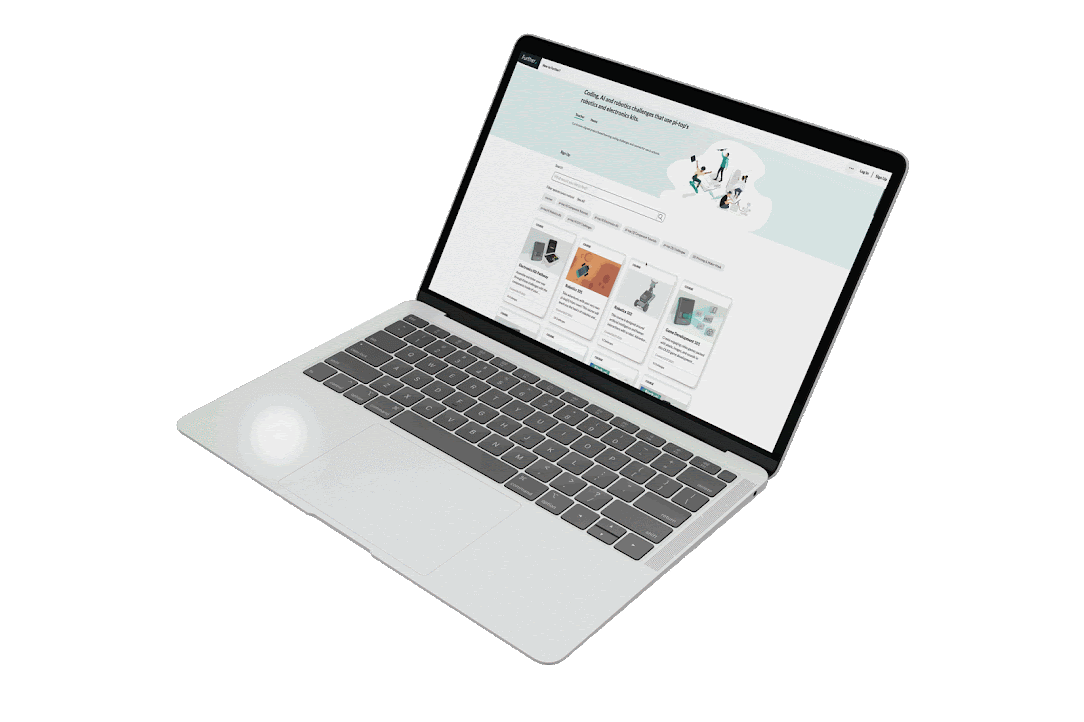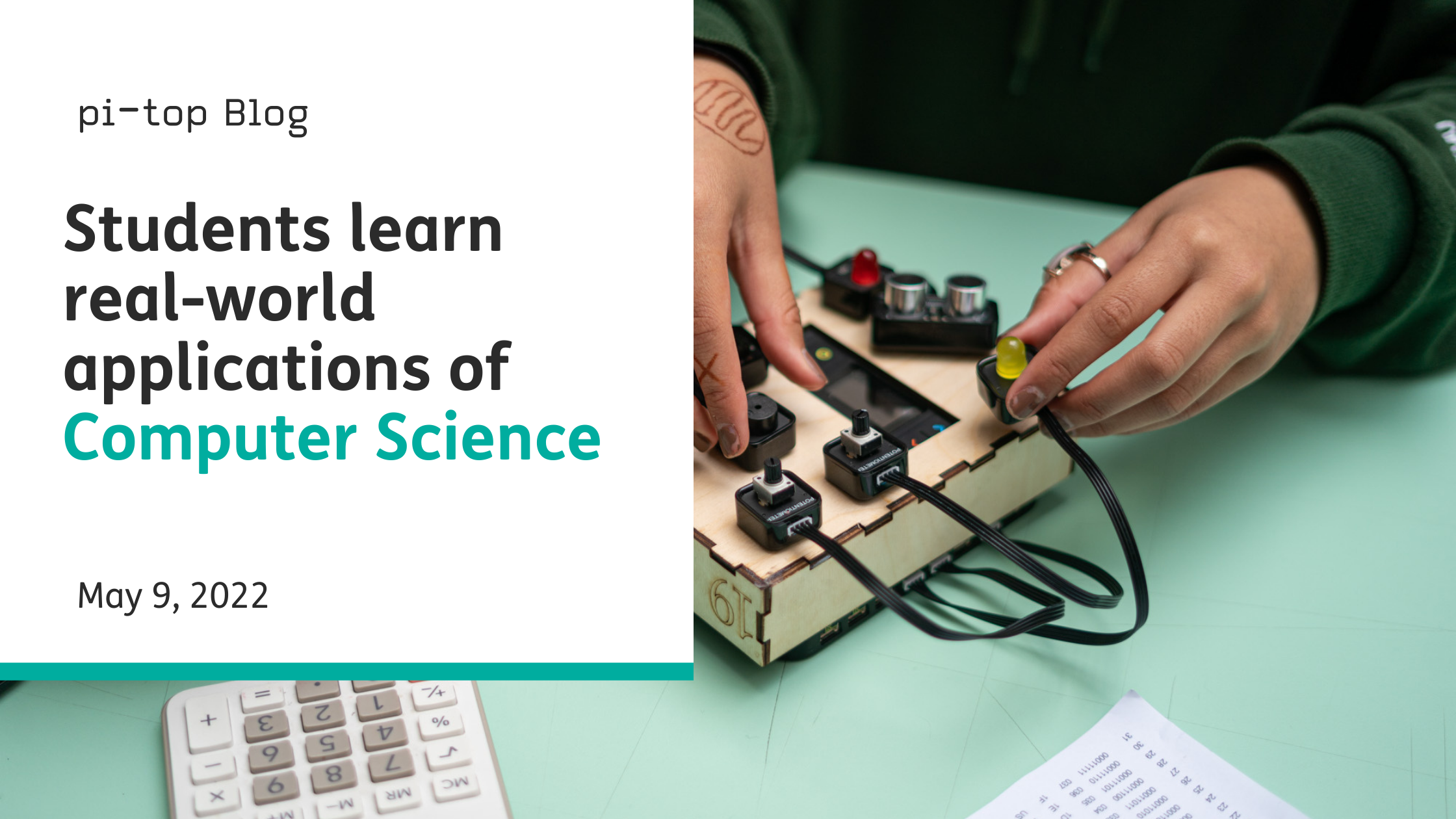We recently had the pleasure of chatting with Sean Raser, a computer science teacher at California High School. Sean has been teaching computer science for years and uses raspberry-pi based products like the pi-top to help students learn real-world applications of programming and bring their own creative project ideas to life.
Read on to learn more about how Sean has improved diversity, engagement, and accessibility to computer science in his district.
.png?width=1600&name=LEGO%20FB%20(Twitter%20Post).png) Can you please share some background information about your school and district?
Can you please share some background information about your school and district?
I work as a Computer Science teacher at California High School (just under 3,000 students from grades 9-12) in the San Ramon Valley Unified School District (located in San Ramon, CA - USA).
What grade and subjects do you teach?
I teach 5 sections of AP Computer Science Principles, which is an introductory CS course and the pre-requisite to CS A (our Java course). The class is open to all grades since it is an elective, and my students range from grades 9-12, but a majority of my students are 10th and 11th graders.
What technology products do you use in your school to teach computer science and STEAM/STEM?
I use the CodeHS platform for my class, which is an online CS curriculum, but I also supplement that material with various units/projects using the Raspberry Pi.
Since my class is an AP class, the curriculum has to be approved by the College Board, but I have been teaching this course for 8 years now and have been able to squeeze in a number of Supplemental Units, such as the Raspberry Pi. I also like to incorporate Robots into the coursework, most of which are Raspberry Pi-based systems.
What are some of the challenges you face in teaching technology/computer science?
💲Funding
I don't receive any funding so I have to find free material to use and then apply for Grants/Donations to acquire the materials required for the Raspberry Pi and Robotics sections.
Fortunately, I have had success through sites like Donors Choose, as well as a number of Grants that have allowed me to acquire quite a bit of equipment, with the pi-top [4] Suite (pi-top [4], Electronics Kit, Robotics Kit, screens/keyboards) being the most recent addition to my class.
🚺 Lack of Representation
Just like the tech industry in general, my classes are male-dominated, although a lot of progress has been made over the years. When I first started teaching this class I had 90 students total, only 3 of which were female.
This year 34% of my students are female, so it's trending in the right direction, but still has a ways to go. Also, although the student make-up of my classes is pretty diverse, African-American and LatinX populations are still very under-represented. It has definitely been a challenge to try to close that gap.
🎉 Engagement
As an elective, I am fortunate because most of my students actively chose to take my class and are interested in the topic. However, there are so many distractions these days between social media, cell phones, other classes, sports/clubs, etc., so finding ways to keep my students engaged and focused is always a challenge (this is just school in general, not really CS-specific).
Also, lots of young people think that when they take a CS class they'll immediately begin making the types of video games and apps that they use every day. They don't realize that there is a learning process to get to that CS skill level.
 Did pi-top products help you solve any of the challenges mentioned above?
Did pi-top products help you solve any of the challenges mentioned above?
Absolutely! Once I acquired enough CEEDS I was able to start hosting events outside of school - Raspberry Jams - that were hackathon-style events that gave students the opportunity to create their own projects and inventions using code. This helped make CS feel more accessible and broke down some barriers by giving them the confidence that they could be successful in learning to code.
These events were open to younger students, too, which helped get them excited about CS at a young age so that they already had an interest when they arrived in high school. Between these events and summer classes, as well as making the Raspberry Pi a regular part of my class, I have definitely seen an increased interest from students wanting to take this class.
8 years ago, when I first started teaching this class, I had 2 sections of AP CSP. This year I have 5, and next year we just learned that we are going to have 9 sections (which means finding another CS teacher to help). As I mentioned above, each year as the number of students taking this class has grown, so has the number of females, which is definitely a positive.
As far as engagement in the classroom, my students always love the time they spend using the Raspberry Pi. They have the freedom to express themselves creatively through programming in a way that isn't always possible simply by writing a program.
Being able to combine physical components (like sensors, LEDs, buzzers, motors, etc.) with programming allows students to bring their creations to life in a way that they haven't been able to in the past, and I have noticed that even students who are normally distracted, or not fully engaged, are captivated by what they can do with these devices.

How did you discover pi-top products?
I first discovered pi-top products when I was trying to figure out how I could incorporate the Raspberry Pi into my classroom. I started using the Pi on my own, as a hobbyist, but saw a lot of educational value and wanted my students to be able to use it.
The CEED was the first Pi-top product that I purchased, first for myself to test it out, and then started acquiring a class set. I also teach Summer enrichment classes, and the CEED allowed me to start teaching a Raspberry Pi class, which I have now been teaching for 5 summers.
Have you used our lesson platform, Further?
 I have used it personally, but have not used it yet in my classroom. However, I am getting ready to use the Robotics Kits with the pi-top [4] for the first time in my classes (I just acquired them earlier this year), and will definitely be using Further to help guide the students through the process of building and programming their robots.
I have used it personally, but have not used it yet in my classroom. However, I am getting ready to use the Robotics Kits with the pi-top [4] for the first time in my classes (I just acquired them earlier this year), and will definitely be using Further to help guide the students through the process of building and programming their robots.
I think the platform is great, very easy to use, and has a ton of great resources. I have talked with Eli a few times and have mentioned that I wished Pi-top had a College Board-approved CSP curriculum, which would allow me to use the pi-tops full time in my class (using Further).
Is there anything that you or your students absolutely love about using pi-top products?
My students love how easy they are to use and how reliable they are. I have about 55 CEEDS that have been carted all over the place within my District for different events and classes but have rarely encountered issues with them. They love their modularity and how "hands-on" they are, and how accessories like the ProtoBoard and speakers allow them to incorporate even more possibilities into their projects.
On the [4]'s, my students really like the OLED screen and how they can create their own games directly on it. They also like the built-in battery, which allows them to be portable.
Is there anything that you or your students don't like?
The only comment (which isn't really negative) that students have made about the pi-top [4] is asking why it isn't green? (like the previous products) They seem to like that color, which definitely stands out and is recognizable. Other than that, I haven't had any complaints, and personally am very happy with all of the products that I have used. The speaker for the CEED is the only thing that does not consistently work...I seem to always have trouble with those.
What is your favorite project (or what is your students' favorite project) using pi-top products?
Personally, I love anything that the students create on their own... I love seeing their creativity come to life.
One of the cooler projects I have seen was a program that used the PiCamera and could identify if something was "trash" or "recycling". The students used machine learning to train their model, and it correctly classified images more than 95% of the time. They are actually trying to turn that project into an App now to encourage students at school to properly recycle.
I also love when they integrate physical components with Minecraft....that game is so popular that it really gets young kids excited when they learn how to integrate Python with Minecraft.
I had another student that made a system that would use RFID tags and a scanner to act as an attendance system for my classroom. That one was really complex but also had great real-world application.
Is there anything else that you would like to share about your experience?
I am a huge fan of the Raspberry Pi, and the pi-top products have allowed me to use it regularly inside my classroom, as well as at other events, classes, code clubs, etc., which has really helped change the experience that my students have with coding. They are able to make their ideas come to life, express themselves creatively, and really see programming in a whole new light.
Rather than just working on coding exercises, they are able to build, create and invent. I see students that are eager to come back to class so that they continue working on their projects, which (as an educator) is the way you want all students to feel.
Keep up with Mr. Raser and his computer science classes by following him on Twitter
When considering which resources to use for your students, remember—you know your students better than we do. If your students are not quite ready for the suggested activities or programs, give the lower-level activities a try! That’s what’s so great about these resources we’ve provided—versatility! And as long as you are incorporating computer science into your curriculum, you are setting your students up for success.
